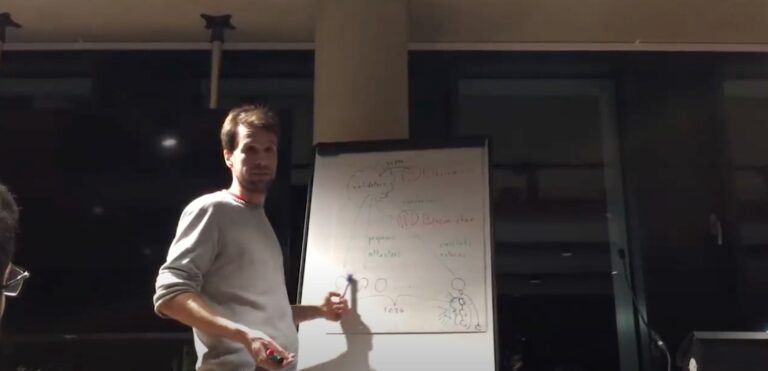In a recent interview, Ethereum Foundation researcher Justin Drake shared his thoughts on a number of topics of interest to fans of Ethereum.
Drake, who has been working at the Ethereum Foundation since December 2017, made his comments about Ethereum while talking to crypto journalist Laura Shin for episode #262 of her “Unchained” podcast.
Below are some highlights from that interview:
- He got into crypto in late 2013 and “fell down the rabbit hole pretty quickly.”
- He started the Cambridge Bitcoin meet-up group in the UK, which was followed by becoming a Bitcoin ATM operator.
- After watching a presentation by Vitalik Buterin on the “data availability problem”, Drake emailed him with some of his ideas for solving this problem. A few weeks later, Vitalik hired him to work at the Ethereum Foundation (at a time when there were only a handful of employees). This is when he started to work on sharding.
- He has also been involved with the hiring process (e.g. in order to find good security researchers to ensure that the Beacon Chain is very secure).
- Over the past few months, he has been focusing on what he calls the “meme layer” (or layer 0).
- One of the original motivations for EIP-1559 (which was part of the London network upgrade, which went live on the Ethereum mainnnet on August 5) was to improve the user experience (i.e. to stop people from under-paying or over-paying for their transactions).
- EIP-1559 also “improves security” (since it reduces the chances of re-orgs). Also the burning of the base fee portion of a transaction fee helps to reduce the ETH supply, thereby “strengthening the monetary properties of ETH.”
- Drake defines money a “money candidate” with “monetary premium.” He defines “money candidate” as an asset that is durable, divisible, fungible, and easily transmissible. He says that with this definition a cow cannot be considered money whereas assets such as gold and Bitcoin have all of these properties.
- Gold has value that goes beyond its utilitarian value; that extra value is its monetary premium, i.e. the special value that society has decided to give gold. And he argues that the same goes for Bitcoin and Ether.
- Today, Ether is mostly used as “collateral money” in the context of decentralised finance (DeFi). ETH is also used as collateral money in the context of staking. ETH is also used for paying transaction fees on the Ethereum network.
- By burning ETH, EIP-1559 makes ETH more scarce, thereby improving the monetary quality of ETH. In the first 24 hours after EIP-1559 went live, over 4.6K ETH (worth roughly $7 million) was burned, or $5000 worth of ETH every minute.
- Drake believes that once “The Merge” (which is when proof-of-work on the Ethereum mainnet will get replaced by proof-of-stake) occurs (probably sometime in the first half of 2022), Ethereum network will become more secure and more economically efficient (since by that time we will no longer have the “too damn high” proof-of-work issuance).
- After The Merge, the amount of ETH issuance will go down by at least 10X since PoW issuance will be gone, i.e. we will have a so-called “triple halvening” (since 10 is greater than 2 to the power of three). As for PoS issuance, it should be a lot less than the amount of ETH being burned as the result of EIP-1559.
- After the Merge, the total supply of ETH is expected to peak at around 120 million, after which the total supply will then start to decrease, thereby making ETH a deflationary asset.
DISCLAIMER
The views and opinions expressed by the author, or any people mentioned in this article, are for informational purposes only, and they do not constitute financial, investment, or other advice. Investing in or trading cryptoassets comes with a risk of financial loss.









